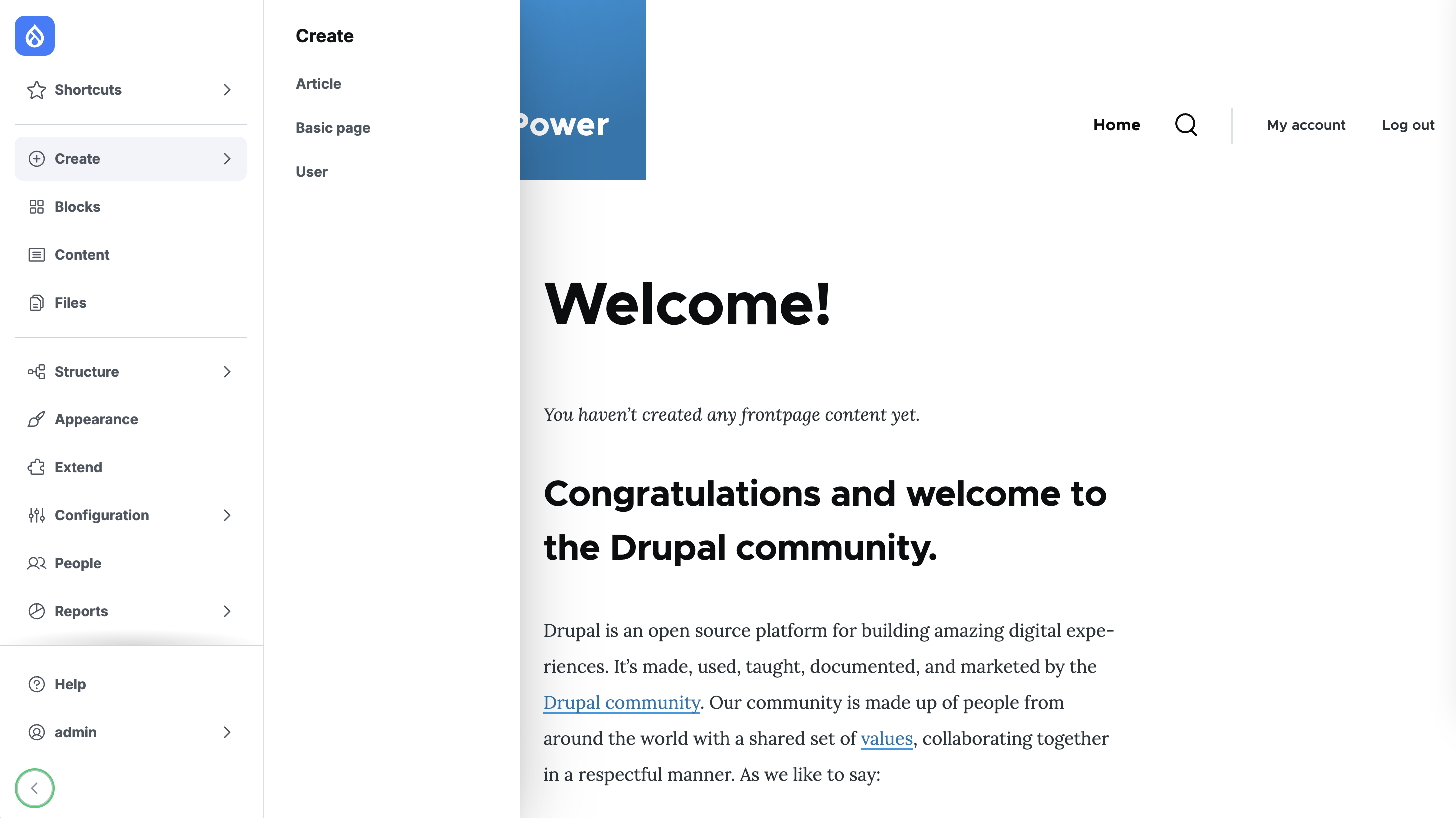
At a previous DrupalCon in Portland, Dries Buytaert, Drupal’s creator, outlined the vision for Drupal to become the go-to platform for ambitious site builders on the open web. Recently, Dries shared an updated roadmap for Drupal 11, which focuses on three key areas:
1. More intuitive content management tools
2. Enhanced site builder capabilities
3. Simplified upgrade and maintenance processes
For those of us involved in building, owning, and managing Drupal applications, Drupal 11 brings a host of powerful features designed to elevate our digital experiences. Let’s delve into the improvements from Drupal 10 to Drupal 11.
Enhanced Administration Backend
Drupal 11 introduces several handy new features for site administrators. The classic administration toolbar now loads faster on both back-end and front-end pages, streamlining access to essential tasks. Additionally, a new option within Views allows you to create pages that display in the administration theme regardless of their path.
Permission management has also been simplified with the addition of a quick filter to easily find and adjust the necessary permissions. Furthermore, the new Announcements Feed module is included by default in new Drupal installations. This module provides a feed of Drupal project and Drupal Association announcements directly within Drupal core, keeping site owners and administrators informed about the latest project news.

New Features in Drupal 11: Enhanced Navigation and Single-Directory Components
Drupal 11 introduces a range of innovative features, including an experimental Navigation module and the integration of Single-Directory Components (SDCs) into Drupal core.
Revamped Navigation with the Experimental Module
Drupal 11 debuts a new experimental Navigation module that reimagines the classic toolbar. This feature introduces a left-aligned, collapsible vertical sidebar designed to streamline navigation through the administration menu. The new sidebar is highly customizable, allowing you to configure existing blocks or add additional menu blocks to tailor the navigation experience to your needs.
Single-Directory Components (SDCs) Now in Core
The Single-Directory Components (SDC) module, which was previously available as an external module at [Drupal.org](https://www.drupal.org/project/sdc), is now integrated into Drupal core and considered stable. This feature simplifies UI component creation by consolidating all necessary files into a single directory. This organization makes components easier to locate, reuse across different parts of the site, and develop. With SDC, front-end developers can work more efficiently without needing extensive Drupal knowledge, enhancing the flexibility and accessibility of component creation.

Enhancements in Drupal 11: Decoupled Navigation, Improved Menu Creation, and Modernization Features
Drupal 11 introduces significant advancements in several key areas, enhancing both development and user experience.
Simplified Decoupled Navigation
Drupal's API system has long made it a strong choice for front-end JavaScript applications. However, managing navigation in decoupled scenarios has often been challenging. Drupal 11 addresses this with dedicated endpoints using the Linkset standard, simplifying navigation between content elements. This new approach allows front-end developers to easily access and render menu data without hard-coding navigation elements. Additionally, non-developers can now manage application menus without needing to write any code.
Enhanced Menu Creation
The latest updates to Drupal streamline menu creation, allowing users to add child menu items directly and simplify menu item editing. These improvements help users focus on building effective and well-structured sites with less hassle.
Modern JavaScript Integration
Drupal 11 leverages modern JavaScript components to replace some uses of jQuery UI, enhancing performance and development efficiency. New features include on-the-fly JavaScript file minification, which reduces file sizes by up to two-thirds by removing comments, whitespace, and extra parentheses. This reduction in file size simplifies development and might lead to a reconsideration of existing JavaScript minification modules in favor of core’s built-in aggregation and minification tools.
Advanced Debugging and Cache Controls
For developers, Drupal 11 introduces "Twig Development Mode," which provides powerful debugging tools to streamline the development process. This mode allows for immediate visibility of changes in Twig templates, reducing the need for frequent cache clears. Additionally, the new "Do Not Cache Markup" option gives developers precise control over caching strategies, disabling Render Cache, Dynamic Page Cache, and Drupal Page Cache to offer a true-to-development view of changes.
These enhancements in Drupal 11 contribute to a more efficient and flexible development environment, making it easier to build and manage robust digital experiences.
